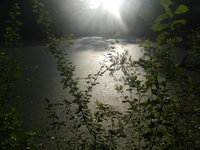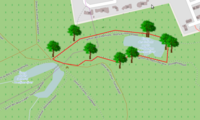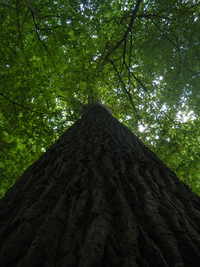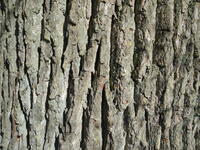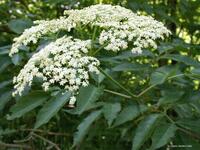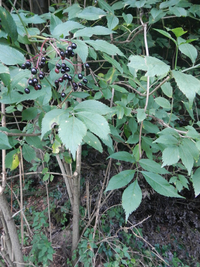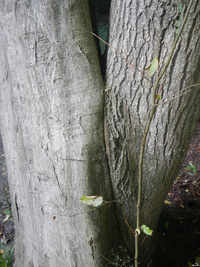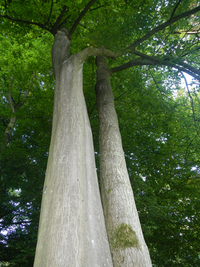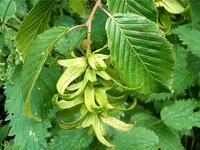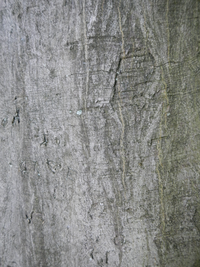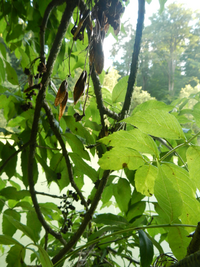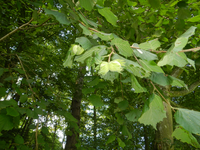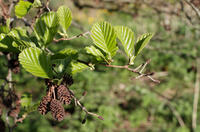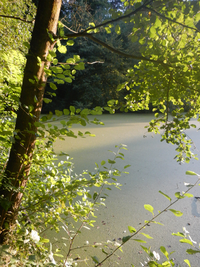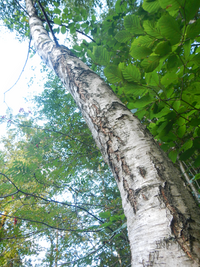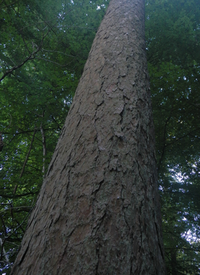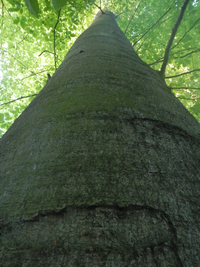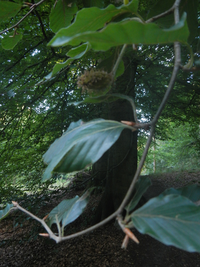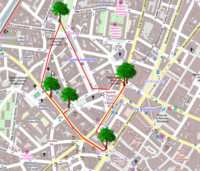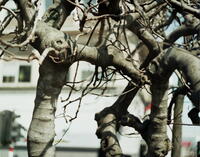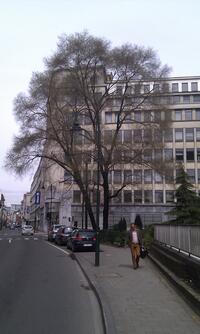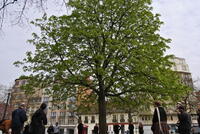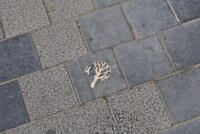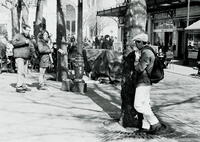Table of Contents
Walk & Become a Member of the Silent Political Party of Trees (work-in-progress)
Silent political Party of Trees?
A long time in the future… after events that changed our world, a silent political Party of Trees is formed. Not to rule the world or make laws for the economic profit of selected individuals but to advise, feed and protect all species of this earth.
With their heads high in the sky they stand for the rights and duties of all beings, and the natural patterns of life and death. Rights that every living creature deserves equally. Duties that many of them perform already.
The silent political Party of Trees is formed by Arboreal Persons chosen to represent every aspect they stand for:
- love and beauty
- energy
- water and food
- drugs and health
- air and soil
- wisdom
- weakness
- life and death
- symbiosis…
The chosen trees understand the importance of their engagement and the responsibilities that they have to carry on their shoulders from one age to another. Their party is formed not out of boredom, fancy, or private ambition but pure necessity for this planet and the universe.
Are we ready to allow and embrace the necessity?
Why walk?
Any one of us can join the silent political Party of Trees by completing one of these walks and by listening to the stories the chosen trees are telling you.
By choosing to walk and become a member of the Party of Trees, you're not joining any regular type of political party you know. They will not represent their ego nor short term views. Trees are networked species. They aim for their own survival, that is true, but they will always realise this in collaboration with others.
Giving your trust to trees is very easy: they will not abuse your rights, you will still have the right to cut their limbs, when that seems to be necessary for your own survival.
By giving your trust, you choose to connect with the energy of the trees, and to live and think with them as they will become your close friends. In return you will regain the connection with the nature and become the unseparable entity of it. You will rediscover the wisdom and instincts inside you. They will empower you as a human being and as a part of the living society on earth.
So if you're happy with all this, just put one foot in front of the other, and choose one of the itineraries below.
Tree walk in Forêt de Soignes/Zoniënwoud
Initially developed in collaboration with Z33 and Heath Bunting and performed in the framework of Bessst in April 2013, with the support of the Vlaamse GemeenschapsCommissie.
Itinerary
Entrance
Drève du Comte/Graafdreef, Enfants Noyés/Verdronken Kinderen, next to the former Hippodrome, Watermael-Boitsfort/Watermaal-Bosvoorde; walk down to the water
Accessibility
You can take the tram 94 from Louisa (direction Musée du Tram), get off at Coccinnelles/Lieveheersbeestjes and just cross the road; you can also access by car and leave it on the parking space near Drève du Comte
Duration
A little introduction
During this walk you will meet the trees who gave birth to the Silent Political Party of Trees. These trees are part of the Forêt de Soignes/Zoniënwoud, one of the few forests in Belgium that has always been forest. Even if the forest has been totally replanted by Jacques Zinner in the 18th century with the beeches we know and the large lanes, the ground that feeds these trees has never been manipulated. The soil as such is turned into a delicate archive open to scientific research.
The trees that belong to this forest enjoy exclusive rights compared to other trees in the Brussels' region. They are part of 'Natura 2020', an environmental protection program that aims to guarantee biodiversity in Europe (50% of mamals and 30% of fish are in danger). Since 2007 this recognition is implemented in the Belgian law providing specially protected zones. In most parts of this forest, trees have such privileges that humans are not allowed anymore to approach them, climb them, go near them. The solidarity that is inherent of a tree's way of life made them act to protect their less fortunate collaegues, and all other species (including us, humans) who are dependent of trees for our survival.
They decided to found the silent Political Party of Trees. The first idea they whispered in their leaves was to consider them as 'arboreal persona', a legal entity equal to natural persona, organisations, companies.
You can read more on the construction of the arboreal persona here.
Enjoy the walk !
Take the Sentier des Endymions/Boshyacintenvoetpad. Immediately at your left hand side, you will find a beautiful oak surrounded by beeches.
* Oak, Eik, Chêne, Quercus robur
La: 50.7917 Lo: 4.40385
The best way to listen to the oak, is to stand against it, touching its strong scarred skin.
Please meet the oak, the judge and the guardian of the world. Tree of the past, the present and the future. This oak has lived more than 100 years and will survive us by another 150 to 200 years if the climate does not change too drastically. Oak grows as deep as it grows tall. It provides shelter and food to millions species in the forest. One grown oak is equivalent to a metropole as big as New York. It can have up to 350 different communities of species living in, on, around and from him.
Among the sacred trees in many traditions, the oak has been the tree under which many disputes have been resolved, many truths have been discovered and many legends have been situated. The mighty oak stands noble and tall as The Tree of Life. The oak tree in folklore and myths represents great symbolic meanings to the pantheons of mythology, to the druids, the faeries, and many cultures around the world. It is the representative of truth and justice.
It is a slow grower. So it is all about time. Just imagine growing trough your life so slowly that 500 years can fly by. Imagine species, landscape situations you could witness. Well Oak does. It is a time machine. If we learn its language, we will take on the habit of looking back, living now and projecting ourselves in a far future, and all this at the same moment. We will discover a very different history from the one we know now.
The oak welcomes you. Take your own time with the oak. Once you're done, walk on and concentrate on yourself, your breath, your heartbeat, your body, your rhythm.
More about the oak
Throughout the major cultures of Europe the oak tree has been held in high esteem. To the Greeks, Romans, Celts, Slavs and Teutonic tribes the oak was foremost amongst venerated trees, and in each case associated with the supreme god in their pantheon, oak being sacred to Zeus, Jupiter, Dagda, Perun and Thor, respectively. Each of these gods also had dominion over rain, thunder and lightning, and it is surely no coincidence that oak trees appear to be more prone to lightning strikes than other trees, whether because of their wood's low electrical resistance or the fact that they were frequently the largest, tallest living things in the landscape.
The Druids frequently worshipped and practised their rites in oak groves (the word Druid was probably a Gaelic derivation of their word for oak, Duir, and meant men of the oaks). Mistletoe, probably the Druids' most potent and magical plant, frequently grew on oak trees and its presence was believed to indicate the hand of God having placed it there in a lightning strike.
Ancient kings presented themselves as the personifications of these gods, taking on the responsibility not only for success in battle but also the fertility of the land, which relied on rainfall. They wore crowns of oak leaves, as a symbol of the god they represented as kings on Earth. Similarly, successful Roman commanders were presented with crowns of oak leaves during their victory parades, and oak leaves have continued as decorative icons of military prowess to the present day.
Oak leaves' connection with rainfall also survived in more recent folklore in a variety of similar rhymes about which tree's leaves appeared first, such as the Irish saying: If the oak before the ash, then we'll only have a splash. If the ash before the oak, Then we'll surely have a soak!
In Celtic mythology, oak is the tree of doors, believed to be a gateway between worlds, or a place where portals could be erected. In Norse mythology, the oak was sacred to the thunder god, Thor. Some scholars speculate that this is because the oak, as the largest tree in northern Europe, was the one most often struck by lightning. In Classical mythology, the oak was a symbol of Zeus and his sacred tree.
The Oak tree is traditionally sacred to Serbs and is widely used throughout Serbia on national and regional symbols both old and new. In the Bible, the oak tree at Shechem is the site where Jacob buries the foreign gods of his people. In addition, Joshua erects a stone under an oak tree as the first covenant of the Lord. In Isaiah 61, the prophet refers to the Israelites as “Oaks of Righteousness”.
The oak tree is used as a symbol by a number of political parties. It is the symbol of the Conservative Party in the United Kingdom, and formerly of the Progressive Democrats in Ireland. In the cultural arena, the oak leaf is the symbol of the National Trust (UK) and The Royal Oak Foundation.
* Elder, Vlier, Sureau, Sambucus nigra
La: 50.79201 Lo: 4.40285
The best way to listen to the elder, is to smell its flowers, to touch its spotted skin, to taste its leaves and to look closely at all its details.
Please meet the pharmacist of the forest. With its small and scruffy bushes with tiny leaves in the early spring, the elder doesn't attract lots of attention. But wait until it starts blossoming! It will be swarmed with insects. And in the autumn they get replaced by birds.
The elder is beneficial not only to the animals. People have been using it for ages. Not only enjoying the sweet smell and the taste of the blossom in teas and syrups, but also making jams, sweets and jenever from the berries.
As a member of the silent political Party of Trees, the elder symbolizes the positive attitude towards solving the little obstacles of daily life, so you can enjoy the simple beauty of the moment here and now. Whisper your worry in its leaves and wait for your inspiration to whisper back the solution. The elder guarantees you can keep on breathing and helps you to liberate the breath of life.
While you walk on to meet the next trees, think of your house and all the things made of wood.
Healing power
The entire tree is to be used for healing purposes. Flowers and berries are used in treating the flu, alleviating allergies, and boosting overall respiratory health. The elder is also used in Traditional Chinese Medicine, dissolved in wine, for rheumatism and traumatic injury But be careful. Some powers can become dangerous. Eating raw berries can cause nausea and stomach aches.
Washing her face in dew gathered from elderflowers was believed to enhance and preserve a woman's youthful beauty, and derivatives of elder continue to be used in skin cleansers such as Eau de Sureau, and eye lotions. Elderberry wine, elderflower cordial and dried elderflowers for infusion are all still commercially available.
A couple of cups of hot elderflower tea before bedtime helps to bring on a cleansing sweat to combat cold and flu-like symptoms, and elderberry drinks were formerly prescribed to sooth throat complaints.
A fine elderflower champagne can be made using the yeasts naturally present in the blossoms, which can also be dipped in a batter and eaten as fritters.
Traditional uses
Branches from the elder are also used to make the flutes. Magic flute? Sounds can heal deepest illnesses… In common with other trees with white blossom, such as hawthorn and rowan, the elder had strong associations with Faery- and Goddess-centred mythology.
Like rowan, the elder was thought of as being a protective tree, and it was auspicious if it was growing near one's dwelling, especially if it had seeded itself there. If the rowan's place was traditionally at the front of the house, the elder's was at the back door, to keep evil spirits and other negative influences from entering the home. The aroma exuded by the elder's leaves has long been known to repel flies, so this folklore may have been born out of the need to keep such insects, and the diseases that they carried, away from the kitchen and food. Bunches of leaves were hung by doorways, in livestock barns, and attached to horses' harnesses for the same reason. Elder was traditionally planted around dairies and it was thought to be efficacious in keeping the milk from 'turning'.
Cheese cloths and other linen involved in dairying were hung out to dry on elder trees, and the smell they absorbed from the leaves may have contributed to hygiene in the dairy. Elder trees were also traditionally planted by bake houses as protection from the Devil (what with all those hellishly hot ovens within!) and loaves and cakes put out to cool under the elders. Any foods left out overnight under an elder however were considered a gift to the faeries.
In common with many other native trees and plants with potent pagan associations, the elder subsequently had negative Christian legends associated with it, to suppress earlier beliefs.The elder was doubly cursed as being the tree from which Judas Iscariot hanged himself, as well as being one of several trees 'accused' of having supplied the wood for the Crucifixion Cross (oak and aspen being other popular culprits), though the small size of the elder trees and the fact that Jesus would not have struggled under the weight of a crossbar made of such a lightweight wood as elder make this highly unlikely.
Notwithstanding these negative beliefs, elder continued to be put to such a wide range of medicinal uses that the mediaeval herbalist John Evelyn called it “a kind of Catholicon against all Infirmities whatever”.
* The Loving Trees
Embrace this beautiful couple of trees, look through their eyes to the peaceful lake and you'll know that strength is not power and power is not strength, they need each other to feel in balance
When you walk on, pick something up and keep it warm.
* Hornbeam, haagbeuk, le charme, carpinus betulus
La: 50.79224 Lo: 4.40612
Please meet the most muscular of all trees, the hornbeam. Not only does its trunk look like the arm of Jerom, but its wood is a very hard timber, hence the name iron-wood. Its outer strength combines with integrity, and it is no coincidence that this hornbeam has chosen for an intimate relationship with a ash, a tree that stands for inner strength and rooted wisdom.
The hornbeam has many friends, such as forest mice, cockchafers and the nuthatch. Hornbeam is the food plant for caterpillars of a number of moth species, including the nut tree tussock. Finches and tits and small mammals eat the seeds in autumn.
The common English name of hornbeam derives from the hardness of the wood - likened to horn - and the Old English beam. Hornbeam is almost white, patterned with lovely flecks and swirls in its grain. When well finished, it is very smooth and often compared to ivory. Hornbeam is rarely used for general carpentry because of the difficulty of working it. Its hardness means it has been used for many applications that have been replaced since iron has become common good. Carving boards are made of hornbeam, tool handles, coach wheels, piano actions - places a very tough wood is required. In fact the timber is so hard it's been used as gear pegs in simple machines, including traditional windmills. It is sometimes coppiced to provide hardwood poles, and also used in parquet flooring. It has even been used to produce wooden screws. Hornbeam burns well and makes good firewood and charcoal.
Often confused with common beech, the bark is pale grey with vertical markings, sometimes with a short, twisted trunk, which develops ridges with age. In French there is a funny riddle that helps you remember the difference between a beech (hêtre) with more hairy leaves and a hornbeam (charme) with little teeth on the leaves (à dents): 'Le charme d'Adam est d'être à poils.'
Hornbeam is monoecious, meaning male and female catkins are found on the same tree. After pollination by wind, female catkins develop into papery, green winged fruits, known as samaras. A hornbeam is also known to be trimmed as hedges, it will keep its leaves all year round, providing shelter, roosting, nesting and foraging opportunities for birds and small mammals. A tonic made from hornbeam was said to relieve tiredness and exhaustion, and its leaves were used to stop bleeding and heal wounds.
* Ash, es, le frêne, fraxinus excelsior
La: 50.79223 Lo: 4.40614
“Know yourself and you will know the world.” This ancient Druid phrase describes to us how we are linked to our world, and how the Ash was seen as spanning the world around us and within each of us.
This is the message the Ash gives you: You are strong enough to stand alone and triumph over difficulties like the rugged Ash tolerating nothing poisonous within its strongly branched shadow. The medicinal sap within its buds and bark
show that you have the power to easily remedy a situation. You firmly cling to what you know is right, just as the dense, fibrous roots of the Ash grasp the earth that holds them. You are safe from harm in the same way that when the Ash is cut down, it revives easily and springs up as a young sapling. You may soon be spreading your wings and taking flight to new pastures, like the winged Ash seeds carried by the winds of Fall. You are connected to the web of life and your every thought and action reverberates on that web affecting your reality. [Tree Magick by Gillian Kemp, http://www.thegoddesstree.com/trees/Ash.htm]
The Ash tree (Old Irish “Nin,” genus Fraxinus) is a large deciduous shade tree with grey-brown bark furrowed in diamond patterns.
The resilience and rapid growth made the ash an important resource for smallholders and farmers. It was probably the most versatile wood in the countryside with wide-ranging uses. Until World War II the trees were often coppiced on a ten-year cycle to provide a sustainable source of timber for fuel and poles for building and woodworking.
The colour of the wood ranges from creamy white to light brown, and the heart wood may be a darker olive-brown.
Ash timber is hard, tough and very hard-wearing, but it lacks oak's natural resistance to decay, and is not as suitable for posts buried in the ground. Because of its high flexibility, shock-resistance and resistance to splitting, ash wood is the traditional material for bows, tool handles, especially for hammers and axes, tennis rackets and it was extensively used in the construction of early aircraft. Ash was commonly used green for making chair frames which would be seated with another timber or with woven rush. Because of its elasticity European Ash wood was commonly used for walking sticks. Poles were cut from a coppice and the ends heated in steam. The wood could then be bent in a curved vise to form the handle of the walking stick.
The light colour and attractive grain of ash wood make it popular in modern furniture such as chairs, dining tables, doors and other architectural features and wood flooring. Source: wikipedia
It is recorded that on the Isle of Bute in Scotland lovers used to eat leaves of an ash tree known at the “Dreamin' Tree” that grew near the church of St Blane and the pleasant dreams they then experienced revealed their actual spouses and intended fates.
Ash bark can make an infusion that is a mild laxative and diuretic. The rood bark is the most potent with astringent properties, and was used to treat liver diseases and arthritic rheumatism. Other uses include reduce fever, treat kidney and urinary infections, expel intestinal parasites, and treating malaria.
Myths and Legends
The ash belongs to the trilogy of sacred Irish trees, the other two being the Oak and the Hawthorne tree. Ash is the tree of rebirth, of protection and divination. Druid wands were often made of ash or hazel and Yygdrasill, the World Tree, is thought to be an ash.
The staff of the good god and chief of the Tuatha De Dannon, the Dagda, is believed to be made of ash wood. In County Limerick, the Lios is the largest stone circle in Ireland. Constructed in about 2500 BC, a limestone outline of the Dagda’s staff was found in the foundation of the circle when it was excavated.
The “Branching Tree of Uisneach” planted by Fintan the Ancient was an ash. Standing upon the mythological fifth province of Ireland, the Uisneach Ash would have been the centre point of Ireland, performing in wood what the Umbilicus Hiberniae; the centre stone of Ireland did as it also lay upon the Hill of Uisneach.
The “Sacred Tree of Creevna” was an ash, and a surviving descendent of that great tree was taken piece by piece to America with emigrants escaping the Great Hunger. Ash protects against drowning and oars and coracle slats were often made of ash.
The handle of a witch’s besom is made of ash as mother, to enable the traveler to traffic between the worlds of the sidhe and the worlds of the sky. Ash represents the letter “N” in the ogham alphabet and the third tree month from February 18 to March 17.
Some traditions of magic hold that the leaf of an Ash tree will bring you good fortune. Carry one in your pocket - those with an even number of leaflets on it are especially lucky. In some folk magic traditions, the ash leaf could be used to remove skin disorders such as warts or boils. As an alternate practice, one could wear a needle in their clothing or carry a pin in their pocket for three days, and then drive the pin into the bark of an ash tree - the skin disorder will appear as a knob on the tree and disappear from the person who had it. The spear of Odin was made from an Ash tree, according to the Norse poetic eddas. Newborn babies in the British Isles were sometimes given a spoonful of Ash sap before leaving their mother's bed for the first time. It was believed this would prevent disease and infant mortality. Five trees stood guard over Ireland, in mythology, and three were Ash. The Ash is often found growing near holy wells and sacred springs. Interestingly, it was also believed that crops that grew in the shadow of an Ash tree would be of an inferior quality. In some European folklore, the Ash tree is seen as protective but at the same time malevolent. Anyone who does harm to an Ash can find themselves the victim of unpleasant supernatural circumstances. In northern England, it was believed that if a maiden placed ash leaves under her pillow, she would have prophetic dreams of her future lover.
* Hazelnut, hazelnoot, noisetier, corylus
La: 50.79177 Lo: 4.40702
Stand under the hazel leaves, be as silent as possible, listen to the wind dancing in its leaves
Please meet the witch of the forest.
Down through the ages the Hazel has always been considered magical, and was used primarily for its powers of divination.
In August this Hazel forms a roof of branches and leafs in collaboration with its collaegue hazels. They form a network for the red squirrels, who jump as acrobats from one branch to another. Often they can be heard above, where they cut off the hazelnuts with their sharp teeth, and parts of the nutshells happen to whirl down on you.
It was believed that hazelnuts contained a concentration of wisdom and poetic inspiration. There are several variations on an ancient tale that nine hazel trees grew around a sacred pool, dropping nuts into the water to be eaten by some salmon (a fish revered by Druids) which thereby absorbed the wisdom. The number of bright spots on the salmon were said to indicate how many nuts they had eaten.
Hazel has long been a favourite wood from which to make staffs, whether for ritual Druidic use, for medieval self defence. Hazel shafts were used for water divining, and this practice evolved into the making of pilgrims’ staffs, shepherds’ crooks and walking sticks. The wood burns well and offers great charcoal useful for drawing. The branches are extremely flexible and can be used for weaving baskets and fences. Thousands of years ago, fishermen boats were made of hazel, covered with peltry. The woven branches were also the basis of clay huts, attached to poles and covered with clay and hay. Hazel was also used for hoops.
Look at trees as if they were individuals and think of their variety in race, age, …
Magical Uses
The use of Hazel divining rods (dowsing rod) to detect water and mineral veins comes down from antiquity, the art of which is called “rhabdomancy”. Typically a divining rod has two forks off its main stem shaped like the letter “Y”.The two forks of the rod are gripped with the fore fingers along the forks, so that the tail end of the rod points down toward the ground to begin searching. Another method was to peel the bark of the rod and simply lay it on the palm of the hand. The same method was used to find treasure, thieves and murderers.
The practice of dowsing is still common today in Cornwall, and in other European Country’s. According to folklore and superstition, the dowsing rod is guided to water or mineral lodes by guardian pixies, or the kobolds (gnomes) of Germany. When the dowsing rod begins to twitch, the dowser or rhabdomancer is said to feel a sudden acceleration or retardation of the pulse, or a sensation of great heat or cold at the moment of discovery. In the past other woods such as the Willow tree, were also used for dowsing.
No doubt it was from using Hazel rods in divination, that its fruit the Hazelnut became associated with fortune telling. In Scotland an old custom of love divination is still practiced on Halloween, in which two hazelnuts are given the names of lovers and placed on burning embers. If they burn quietly and remained side by side, the lovers were considered faithful, but if the nuts crack, spit or roll apart, they were considered to be ill-matched and one of them unfaithful.
In ritual Hazel wands are used in connection with mercurial energy from which poetic and magical inspiration is gained and imparted. Hazel wands can also be used to divine suitable places in which to work magick. An old method of cutting a wand was to find a tree that has yet to bare fruit, and at sunrise on a Wednesday (the day ruled by Mercury), to cut a branch with a single stroke from a sickle.
The Hazel is considered to be at its most powerful during early spring while its sap is still rising, and in autumn when its sap and energy is fully contained within ready for its harvest of nuts. A good divining rod is said to “squeal like a pig” when held under water.
The nuts of the Hazel were commonly used to bring luck by stringing them together and hanging them in the house. Such a string of nuts were often given to a new bridesmaid as a gift to wish her wisdom, wealth and good health. When eaten the hazelnuts are said to increase fertility, and of old were eaten before divination to increase inspiration.
Also the old, supple twigs of Hazel were woven into crowns and called “wishing caps”, which when worn and if you wished very hard, would make all your desires come true. Sailors, believing them to offer protection against bad storms at sea, also wore wishing caps.The ancient druids believed they could induce invisibility by wearing them. Twigs of Hazel placed on window ledges give protection against lightening, and three pins of Hazel hammered into a wall of the house would protect it from fire.
But our favourite story of Hazelnut is the legend about golden snake. The legend says that if you find a hazel tree with the mistletoe growing on its branches it means there is a golden snake living under it. If you can catch that snake, you will gain the power of invisibility.
More myths
Known as the Tree of Knowledge in Norse mythology, the hazel was sacred to the god Thor. In Irish and Welsh folklore, the hazel was believed to be a fairy tree, and it still grows near many holy wells. Tara, the seat of ancient Irish kings, was located close to a hazel wood. and it is said that members of the Fianna, a legendary band of Irish warriors, learned to defend themselves with only a hazel stick and a shield.
Since medieval times trees have been considered sacred. For example Hazel for its wisdom and the Oak for its strength and so on. Any unjustified felling of an Apple, Hazel or Oak tree, was a crime worthy of the death penalty. Hazel-wands have often been found in the coffins of notable personalities, for among the chiefs and rulers of ancient times, a wand of Hazel was considered a symbol of authority and wisdom.
In Roman mythology the Hazel is attributed to the god Mercury (Mercurius), whose counterpart in Greek mythology is Hermes. Mercury/Hermes was the messenger of the gods and also the god of commerce, manual skill, eloquence, cleverness, travel and thievery. He is often depicted with a staff or wand of Hazel called a Caduceus, and wearing a broad rimed travelling hat and sandals. As Hermes in Greek legend, when he was only a few hours old he escaped from his cradle and went out in search of adventure. Later that evening feeling hungry, he stole two oxen from Apollo (the god of the sun) and hid them in a cave where he killed and eat them. When Apollo discovered what had happened, Hermes played to him on a lyre, which he made by stretching cords across a tortoise shell. Apollo was so charmed by his music he allowed him to go unpunished. In gratitude Hermes gave his lyre to Apollo, who in return gave him a magical Caduceus made of Hazel, said to bestowed wisdom, wealth and prosperity on its owner by turning everything it touched into gold.
* Alder, els, l'aulne, alnus
La: 50.7919 Lo: 4.40729
While listening to the Alder, think of all the things humans construct with wood under water
The Alder Tree (Old Irish “Fern,” genus Alnus) is a somber deciduous tree with dark bark, which is most comfortable along waterways and streams. It is able to fix atmospheric nitrogen and survive when grown in infertile soils. Alder roots enrich the soil, and its timber resists decay. When immersed in water it hardens to the toughness of stone.
When cut, alder wood turns from white to red and felling of a sacred alder was considered taboo. Dyes were made from its bark, twigs and flowers.
Alder bark treated inflammations, rheumatism, and diarrhea. Bags filled with heated alder leaves helped with chronic skin diseases and burns. A gargle made from leaves and bark cured mouth ulcers and soothed tonsillitis. Alder oil and essence resonate with the Muscular System and can relieve stiffness and damp diseases, enabling us to move forward with flexibility and comfort.
Alder was sacred to the Druids. The pith is easily pushed out of green shoots to make whistles. Several shoots bound together by cordage, can be trimmed to the desired length for producing the note you want and used to entice Air elementals. The old superstition of “whistling up the wind” began with this custom.
“The Alder is a tree that supports and protects physically, emotionally, and spiritually. Its associations with both weapons and shields reminded the ancient Celts that part of the skill of the warrior lies in knowing when to take up the sword and when to take up the shield. Although an alder shield will protect you and give you courage and an alder-forged weapon will help you defend yourself, ultimately the most important aspect of the warrior is his or her intent. This is the key to success or failure. They alder reminds us of the need to blend strength and courage with generosity of spirit and compassion. There is a time to challenge things and a time to hold our peace. The alder teaches us this discrimination and the need to see beneath the surface of things. It combines the desire for self-preservation with the desire to serve and emphasizes the need for a firm foundation to stand on.” from The Wisdom of Trees by Jane Gifford
When you walk on, think of what trees are missing here in the forest
* Silver birch, zilverberk, le bouleau verruqueux, betula pendula
La: 50.79159 Lo: 4.40651
Observe, touch and peel some of its skin, it is harmless and it allows you to start a fire when there is no dry paper available
The birch is said to be the Lady of the Woods, the tree of the future. It is a pioneer tree that does not demand for high maintenance, but can grow on unfertile and bare soils, just like the larch (see below). It symbolizes the idea 'from cradle to cradle': everything of the birch can be used. Its sap is a natural shampoo, and can be a remedy for dysentery and urinary infections. It is also used for wine, honey, sugar and can be drank in spring as a long-life-elixir. The skin can be used to light a fire in a wet place, or for shoes, coats, canoes; its wood is used for furniture; leaves and buttons are used for soap, oil, paint. The oil from Birch bark is used for treating skin conditions, and insect repellent.
About 2000 years ago the birch was mentioned in teachings of Buddha; the name 'Birch' would be originally from the Sanskrit word 'burgha' which means 'writing on a tree' and thus it is said that its skin was also used for writing.
The name would also find its origins in the Ghotic 'bairths', which means light. For Germans and Celts the birch was a holy tree. As the birch is one of the earliest to gain its spring leaves, it is the tree of youth and the new year and its birch rods were used to drive out the spirit of the old year. Birch is symbol of light, new spring, elegance and grace. Criminals and psychic patients would be beaten with birch rods to chase bad spirits.
In Wales, the birch is a tree of love and wreaths of birch are woven as love tokens, its trunk used for the maypole. Like many trees with protective properties, birch boughs over cradles and carriages protect infants against the glamour of the Little People.
When you walk on, think of the different ways trees reproduce
* Larch, lork, le mélèze, larix
La: 50.79148 Lo: 4.40627
Try to reach as high as the lork does
The larch stands for survival. It was the first species to migrate back north after Ice Age. Larch can survive in very austere environments, but cannot stand heavy pollution. It creates symbiosis with mushroomlike fungi that inhabit its roots in a friendly way and allow the larch to absorb more minerals. Toads and bats are great friends of the larch.
Larch is the only species of its sort that looses its leafs in winter. Unlike other trees and plants, larch did not evolve into the sophisticated reproductive system of the angiosperms. The gemma of the larch is not entirely covered by the leaves of the flower. There is no pollen tube that leads the way trough the cells in order to reach its destination. And as a consequence, there is no double fertilization, which is typical for angiosperms, where one embryo will survive, while the other one will serve as a food stock for the first one.
Larch produces one of the toughest woods obtained from conifers and is also resistant to woodworm. It is widely used in construction, for railway sleepers, cabinet work, fences, staircases, telephone poles.
Large quantities of resin are obtained by tapping the trunk. Small holes are bored into the trunk, most resin being obtained from near the centre of the trunk. When properly made, the same borehole can be used for 20 - 30 years. The resin has a wide range of uses including wood preservatives, varnish, medicinal etc. It needs no preparation other than straining through a cloth to remove plant debris etc. The hole is made in the spring and the resin extracted in the autumn. Resin can be extracted from May to October.
We thought of birth, when you walk on, think how is death present
* Beech, beuk, le hètre, fagus sylvatica
La: 50.79158 Lo: 4.40559
Feel the softness of its skin, enjoy its leaves when raining, observe its beauty and grace and in early spring, picture its fluorescent leaves
Like the Birch, the Beech has a strongly feminine presence, but while birch is a “lady,” beech is a queen. Sometimes known as the Mother of the Woods, she stands in stately feminine counterpart to the kingly oak. Her gifts are prosperity, but also wisdom, and she may grant knowledge to those who are aware of her presence. She can help you let go of rigid ideas and move forward in faith and openness.
Forêt de Soignes is known as the 'beech cathedral', but most of the beeches are very old, too old to provide good wood. The beech forest can be compared to an old people's resthome. It is most probable that the beech will migrate north following the climate changes. Therefore, most beeches are replaced by a diversity of trees, aiming to restore the woods as they existed before the 18th century. 38% of the Forêt de Soignes belongs to the Brussels Region, 56% to Flanders and 6% to Wallonia. Only Brussels has decided to keep part of the 'beech cathedral' as a heritage for the future.
In German 'buch' is the same word for book and for beech. Indeed, beech wood was used for the letters of the first printing machines and for the illustrative woodcuts. Beech has made the printing revolution possible, And its skin is as thin as paper. In spring the buttons of a beech look like pens you only have to drop in ink so you can save all knowledge for future generations. The buttons and young leaves in spring can also be eaten in salad.
Beeches tend to grow their leaves in order to cover all air above them and if necessary, they wear them as a coat along their trunks. This is due to the fact that beeches are highly sensitive to sunlight, and if they're exposed, they'll get sunburned. It is great for walkers and joggers and picnickers in rainy Belgium. Find yourself a beech and you'll keep dry.
Being highly sensitive and very graceful, beech is thus also a very dominant species. Not many plants can stand the shade of the beech. And once there are some beeches present in a forest, the spread very quickly. But one tempest or heavy winds can be enough to make the beech stumble. Unlike the oak, beech roots are very superficial. During walks in Forêt de Soignes, you'll encounter frequently a fallen beech with its roots standing straight up as a natural wall to climb.
As a ritual to end this walk and celebrate your membership, find a new place for that something you picked up
Tree walk in the centre of Brussels
Initially developed in collaboration with Z33 and Heath Bunting and performed in the framework of Bessst in April 2013, with the support of the Vlaamse GemeenschapsCommissie.
Itinerary
Start
Café De Markten at Oude Graanmarkt/Vieux Marché aux Grains in the centre of Brussels; you can reach this place by tram 3 or 4.
Duration
A little introduction
During this walk you will meet some of the arboreal persona that survive in the centre of this European, Belgian and Flemish capital. We use the word 'survive' because it is quite unusual to be in a place where trees are such a tiny minority compared to all other species living in a city. The species we find in the city are still anonymous but brave and courageaous trees. We propose you to meet these rare co-citizens and help them out of their anonimity, by becoming friends with them and adopting them as part of your social network, speak about them as you speak about your friends and family, share their stories.
Ownership and management of the trees in Brussels' public spaces depends on the ownership of the street they are found in. This can be one of the nineteen Communes, or the Region (and in some cases the Royal Foundation). If it is the Region that owns the tree, it will have been allocated a number and will be part part of a three-year survey and maintenance schedule carried out by the BIM/IBGE. If it is owned by the Commune, the management is done by the Commune’s department for green spaces (if it exists). The trees you will meet today are being taken care of by the Department of Green Zones of the City of Brussels. This means that they were probably only randomly taken care of before the completion of the inventory system that started in 2011. Newly planted trees have been registered since 2008.
Because anything can be created and managed with language and stories. The legal system that rules our worlds is created with those tools. We manage our individual and legal identities every single day. So why would we not be able to create new identities, legally and socially, such an arboral identity for something as lively as a tree? By sharing their stories we make these trees visible as co-citizens, and help to construct their arboreal identity. We have one good reason to do so, our survival.
Trees are our ancestors. Without trees we would never have existed. Trees are the former leaders of this planet and by now, every single human with or without power, knows that we will have to grant them their leadership again, at least partly, if we want to enjoy this planet for some more generations. People moan about it, are afraid of the consequences it will have on their own lifes. But in fact, granting trees their authority again is not difficult at all. Just learn to reconnect to the energy of the tree, listen to the tree, and you will discover inside your soul all the knowledge, experience, ideas and values that are necessary to melt anxiousness, greediness, hurry, control and all other tools that cut trees out of power.
So put in your earplugs, breathe deeply, and slowly put one foot in front of the other. At La Bourse you will meet Prutske, our most legendary co-citizen.
* Prutske
Fig tree, vijgenboom, figuier, Ficus
Please meet Prutske, the only tree we found with a real name! And what a name. Prutske is the Flemish Brussels word for 'a tiny little thing of no value'. The name appears in the database of remarkable trees http://bomen-inventaris.irisnet.be/arbre/Brussel_Beursplein_Beursplein/990/, an initiative of the Heritage department of the Brussels Capital Region. If anyone knows the story of how this name was given, please contact bxl@fo.am! Prutske has been registered since 2002, but we don't know his exact age. The database of Remarkable Trees in Brussels has no legal value yet. The trees listed in here can be added by anyone, if only some criteria are respected.
The best way to greet Prutske is to take away some of the garbage that his roots seem to collect easily. Prutske is said to be in weak condition. So any love you can give in any form will be highly appreciated.
So what makes Prutske a remarkable tree?
First of all, Prutske is a rare migrant. His origins lie near the Mediterranean. A fig tree can only survive in a sunny area and when it is protected from the wind. The presence of this fig tree in the middle of the city centre can be called highly unsuspected and surprising. Secondly, following the database, it is the 3rd biggest fig tree of its species in the Brussels Region. And finally, you can observe fruits – sometimes dry – all year long. Prutske must be a cultivated fig tree, because in order to produce fruits, a fig tree needs the help of the fig wasp, a tiny wasp that cannot survive in our regions.
The symbiotical story of the wasp and the fig tree is beautifully portrayed in The Queen of Trees, Deeble & Stone, 2005. Watch on youtube https://www.youtube.com/watch?v=xy86ak2fQJM.
While you walk to the next tree, try to think of the kind of relationships and networks trees maintain in the city. It is very different to the networks of trees in the forest. But after all, just like human beings, trees are at the same time needed and needy.
* White Elms, Amerikaanse Iep, Ormes d'Amérique, Ulmus americana
At the corner of the Rue de Laeken and the rue des Augustins you can greet the twins, two elms that are registered on the conservation list of the Brussels Region since 2006. Elms are known to be city trees. Amsterdam is full of them. They can live for several hundred years.
You can get to know these elms by watching closely for five minutes the silhouettes of their crowns against the clouds.
They used to be three, a little sisterhood. The third was removed for security reasons in 2007. The reason is not clear to us yet. Maybe it was affected by the Dutch elm disease. This disease is caused by a member of the sac fungi (Ascomycota) and is spread by the elm bark beetle. Although believed to be originally native to Asia, the disease has been accidentally introduced into America and Europe, where it has devastated native populations of elms which had not had the opportunity to evolve resistance to the disease. The only solution is to cut the ill tree and burn it. In the long term they inject vaccins and cultivate hybrid elms.
All in all, these two elms resisted to long term pollution and illnesses. There heighth, their beauty and their scarcity have brought them to the Brussels Region Government, who voted on the 17th January 2008 for their protection. Looking at what this means, one could say that all trees of Brussels should be on that list:
a) It is prohibited to use, store or produce substances that can cause damage to the development and the growth of the trees, the fauna and flora and the water quality.
b) It is prohibited to place advertising panels.
c) It is prohibitied to light a fire.
d) It is prohibited to leave or store materials, rubble, waste, garbage and rubbish of any kind.
e) Normal maintenance of the tree (cutting dead or broken branches, taking care of wounds) is compulsory. One defines normal maintenance by the size of the broken or damaged branches whose section diameter in their insertion is not larger than 12cm.
f) It is prohibited to trench or highten the soil.
Read the full document (in Fr/Nl): http://www.monument.irisnet.be/images/REGISTRE/AG/042_002.pdf Link to the database: http://bomen-inventaris.irisnet.be/arbres/Brussel_Augustijnenstraat__4/681/
Apart from being remarkable or preserved a tree can also be protected in the Brussels Region. There is only one such tree, a Lebanon cedar in the Avenue Palmerstonlaan. This is the only tree that cannot be cut without public permission and has to be replaced when it dies.
Remember that in German mythology our genealogy goes back to two trees. The first woman was created from the wood of an elm, the first man from the wood of an ash.
When you walk on, we invite you to think of the fact that many trees live for more than several hundred years, some oaks even for six hundred years. These elms are said to be more than a hundred years old. If they could speak, what would they tell us? What has changed since their youth? And what kind of historical events did they witness?
*Horse chestnut, witte paardenkastanje, le marronnier d'Inde, Aesculus hippocastanum
We're happy to introduce you to the horse chestnut, the king of this small pardise of biodiversity in the middle of town.
If you're many, the best way to get to know this tree is to form a circle at the far ends of its crown. If you're alone, you can walk the distance. This makes you realize how wide a tree can be, even in the city. And how wide his roots grow under us.
The horse chestnut ows its success to king Leopold II. Thanks to him some avenues are still gifted with magnificent rows of horse chestnut. This species is well adapted to the urban environment, although his fast growing branches are often heavily cut and his roots can cause damage to footpaths.
In times of crisis you might be happy to know that the roasted seed of the horse chestnut is used as a coffee substitute. The cooked seed can also be dried, ground into a powder and used as a gruel. The seed is quite large, about 3cm in diameter, and is easily harvested.
Unfortunately the seed is also rich in saponins, these must be removed before it can be used as a food and this process also removes many of the minerals and vitamins, leaving behind mainly starch. The seed contains up to 40% water, 8 - 11% protein and 8 - 26% toxic saponins[218]. The seed needs to be leached of toxins before it becomes safe to eat - the Indians would do this by slow-roasting the nuts (which would have rendered the saponins harmless) and then cutting them into thin slices, putting them into a cloth bag and rinsing them in a stream for 2 till 5 days.
Saponins in the seed are used as a soap substitute. The saponins can be easily obtained by chopping the seed into small pieces and infusing them in hot water. This water can then be used for washing the body, clothes etc. Its main drawback is a lingering odour of horse chestnuts. A yellow dye is obtained from the bark. The flowers contain the dyestuff quercetin. The wood is soft, light, and not durable. Of little commercial value, it is used for furniture, boxes, charcoal ad to be burned.
Source: http://pfaf.org/user/Plant.aspx?LatinName=Aesculus+hippocastanum
When you walk on, we invite you to think about the future. What would be the best kind of the tree for the future of this city? What would we need a tree for in 2060?
*Imaginary tree rue Dansaertstraat
For those who witnessed the leak in the water pipe under this street some years ago, it is not a surprise you don't find any trees at this side of the rue Dansaert. Therefore we invite you to imagine your own tree, one that can be of help for future generations of this city.
What tree did you think of while walking here? And why? And would you consider it to resist to the criteria of today's choices for planting trees in the cities?
It is no coincidence that the actual trees in the city are very different species to the ones we find in the forest. There are only a few types of trees that can survive in the city. This depends on several factors: their resistance to salt (in winter), vandalism, pollution, pressure on their root systems, and also the conditions of various pipelines under the roads (gas, water, electricity, metro…).
The beech, the poplar, the willow and many types of fruit trees have crawling roots, that can be visible at the surface. These trees are highly sensitive. It is important that their roots are not damaged, because these wounds serve as large entrance gates for all kind of illness agents. Parking cars, cutting the grass, playing at their roots will asphyxiate them. Water and a lot of air in the soil are needed to guarantee their metabolism. This said, a lot of citizens don't like this type of trees for a very different reason: the leaves and the fruits that fall of in autumn.
Take a picture of your tree, write down its specificities, turn it into story that you can tell to yourself or your friend while walking back to Vieux Marché aux Grains for the last series of trees.
* Plane, plataan, platane, Platanus – all together they form the Brussels' Court of Peace
Please meet the toughest of all trees, the planes. These trees do resist smoothly to any kind of pullution, vandalism and root pressure. If they happen to be damaged or attacked, they react as snakes do: they grow a new skin and let go of the old jacket. They are abundantly present in Brussels, because people appreciate their presence very much.
In a more negative way, one could compare these trees to plastic living beings. Opposite to most trees, they do not go into symbiosis with other species. This is due to the fact that none of the fungi, insects or other friends migrated with them to the North.
These planes are hybrids of Western and Eastern planes.
Therefore, the planes seem to be a beautiful metaphor for people who arrive in Brussels and for the openness of inhabitants towards them. We all resist the sometimes unfortunate conditions of this place, most of us arrived alone or in company of soulmates, and it takes time to get into other symbiosis than what we grew up with. But more than any other tree, planes bring with them new perspectives, flexible living, sweet shades, nice sounds and the breeze of mediterranean plazas.
Therefore we baptized the trees of this square as the new wise people, always ready to advise and share, if only we are ready to listen to them.
Whenever necessary, you can make a fist, whisper your problem into it, put your hand on the bark of one of the planes, and listen carefully to their answer. Do not forget to thank the tree when you leave.
Round table discussion/walk for States of the Arts
We were invited to present the idea of Silent Political Party of Trees at the round table discussion during the event State of the arts in Brussels http://fo.am/state-arts/
http://www.paramoulipist.be/treeparty
I take on the talking stick Going on the road of naivity and imagination a speculative table:story a way to bypass the actual political institutions to be able to approach them in a different way, rethink them
method: we proposed some thoughts and questions, everyone could write down associations on small papers, cut them like leaves and put them on a heap in the middle of the table, the autumn metaphor
we choose trees, because - we depend upon them for our survival and by now they depend on us for their survival - we can learn from them: they are competitive and very solidary, they are generous and never destructive we want to take them into account by including them into our juridic system we invented an arboreal persona, that equals the natural persona and the legal persona every tree has a minimum of rights and duties already depending on where s/he lives the Brussels' tree 'states' are irregular and fragmented
When we look at trees, time scale becomes an obvious criteria: they have lived before us, they will live after us, the shortest life cycle of a common tree here is 80 years (larch, birch), the longest up to 500 (oak). Politicians think in terms of 4 or 6 years, forest guards think in terms of centuries. The trees we live with today in the forest have been planted by people 200 years ago. They serve us with beauty, pleasure, food and materials. The trees that are planted now will serve the future generations in 300 years time. So the choices the forest guard makes are not for himself, nor for his friends, they are for all living creatures, for the earth.
When we think about a silent political party of trees, the first thing that comes in mind is: do trees communicate? If so, how do we communicate with them? Trees are silent, but we all agree that they do communicate. They can talk. We have seem to have lost our capacity to communicate with them. Or are we deaf? Or death, like someone understood it? There have been ancient societies in which trees were part of daily social life. When a child was born it would get a tree assigned to it. In celtic culture f.ex. each tree represents a specific value. If we want to be represented by trees, we need translators. These are people who developed a specific mindset. Empathy seems to be the answer (cfr the book by Frans De Waele). And telepathic communication (cfr Rupert Sheldrake). 'As I am a lasagna of identities, could one of them be a 3?'
You cannot talk about someone without the presence of this individual, that is one of the basic rules of respect. So we went for a walk to meet some trees. One of them is Prutske, a fig tree in a pot near De Beurs. It still bears figs now. Figs are like flowers turned inside out. Therefore Prutske was collectively declared to be an artwork. But it is also a worrying proof of human genetic engineering, as Prutske normally would need wasps to reproduce herself, and these wasps cannot live in our climate. How come Prutske bears fruits in the middle of November? This thought led us to the idea that trees and artists have a lot in common: they both create fruits that others can enjoy, they have underground networks and upperground networks, and they cultivate the art of being, living in the now, connecting themselves with the past and projecting themselves in the future. We live from, for and with energy. In Belgium a lot of artists work under the status of the houthakker/woodcutter. We asked ourselves if Prutske would also need a visa?
We also thought on how such a tree party could work in a hundred years time, or fifty, or maybe already tomorrow. It seems obvious that the tree party would be part of a matririfocal society. Where Lietaer talked about the yin and yang of the money system, we could apply that to the political system. The tree party could then be the yin part next to the classical yang part and they would have to collaborate.
Some obligatory aspects of this tree party would be:
- the meetings would have to take place outside, in the presence of trees; that is where politics begun anyway
- to have to listen beyond words, to tune into the collective wisdom and speak from there
- to take time, every break there would be a mandatory tree hugging for all politicans for at least 5 minutes; those who don't like hugging, can climb a tree.
- there would be one season dedicated to rest
- people would have to use a talking stick that they pass on to each other (the microphone is also a talking stick 
Links
http://ekostories.com/2013/05/16/le-guin-direction-of-the-road/
https://www.flickr.com/photos/foam/sets/72157636253456134/ https://www.flickr.com/photos/foam/sets/72157633447132812/ https://www.flickr.com/photos/foam/sets/72157633431550085/ https://www.flickr.com/photos/foam/sets/72157633224778197/ https://www.flickr.com/photos/foam/sets/72157631828144552/

